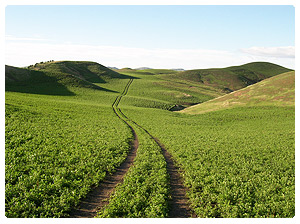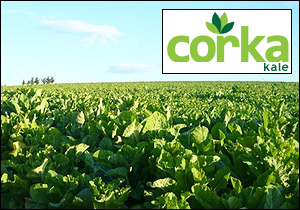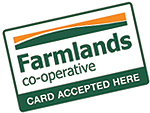 GrubOUT U2 Endophyte
GrubOUT U2 Endophyte
My entire working career has been in agriculture and during this time I have been witness to a very limited number of products that I believe have significantly changed the face of a farmer's lot.
A classic example of this has been Roundup. Yes I'm old enough to remember it's release. Not only did it significantly improve the control of several problem weeds but it also improved opportunities for farmers to lower costs and improve productivity (i.e. direct drilling).
I believe there is another product, soon to be released, that I hope significantly improves a pastoral farmer's lot, I am referring to GrubOUT.
GrubOUTŪ U2 endophyte is a unique new endophyte providing host pasture grasses with above and below ground protection against New Zealands most serious insect pests.
There can be no question that pasture persistence issues can be put down to a number of problems. In saying that, insects have been recognised as the most significant problem.
Work on controlling them by manipulating the naturally occurring endophyte within perennial ryegrass was begun by Les Fletcher and his team back in 1981. Since then we have seen the release of a number of very good endophytes (e.g. AR1, AR37 and NEA products to name a few). All of these products have improved control of insects above the ground but have had little or no effect on the insects below the ground.
GrubOUTŪ U2 endophyte due to be released from Cropmark Seeds next Autumn has shifted the goal posts in the battle against pasture pests significantly in that it is resistant to insects, both above and below the ground.
These insects include Grass Grub, Black Beetle, Porina as well as the Red Headed Pasture Cockchafer, which is a major problem in Australia and in localised areas of New Zealand. GrubOUT is also very effective against Argentine Stem Weevil and a wide range of above the ground insects.
I have been privileged enough to have been able to sit on the edge of GrubOUT's development over the last 5-6 years and I have followed its progress with much interest. While Cropmark Seeds claim it's development started 15 years ago I think GrubOUT may be the end result of a life time's work by Nick Cameron who would have to be one of the world's foremost endophyte scientists'. Because of the time, testing and dedication Nick and his team have done on GrubOUT I'm sure, and certainly hopeful it will deliver on all it promises.
GrubOUT will have a limited release this coming Autumn in a seed blend called "Barrier Combo". The amount and time it will be available for will be subject to the 2013 harvest. We will hopefully have some product to sell and between now and then we will keep you up-to-date and provide more information on it to you.
GrubOUT Website: Please click here to go to the
GrubOUTŪ U2 endophyte website.
Endophyte Options: Please click here for
GrubOUTŪ U2 endophyte and other endophyte information.
Contact Link: Please
contact Specialty Seeds for up to date information on GrubOUTŪ U2 endophyte.
Back to top
 Lucerne Management
Lucerne Management

I've been looking at many Lucerne stands recently and while most of them got away to a good early start in late August, the cold and generally wet conditions we had during September have set some stands back for a while. However as most stands will have their first Spring use this month I thought I'd give you some simple tips on the management of your Lucerne stand.
Spring management of Lucerne stands
Your new Lucerne crop leaves start to grow from the tip of the stem. Once these growing points are removed by cutting or grazing the growth of that stem stops.
The next crop comes from new stems that have to regrow from the base of plant. You must allow time for these new stems (or crop) to grow to return carbohydrates back into the roots. This will provide the required growth for the next crop of stems.
Ideally the time between cutting / grazing is between 35-42 days, depending on conditions. Leaving your Lucerne stand too long between use will reduce the quality and production of that and subsequent crops.
We recommend you allow newly established Lucerne stands to produce flowers (10%) after its first grazing, after establishment. While established Lucerne stands should be allowed to flower once every Autumn.
Lucerne is a gross feeder of potassium and after your stand has been harvested you need to replace it. Depending on your base fertility the first fertiliser application (of between 150-250 kgs per hectare) should be applied after the first cut/graze. More fertiliser should be applied after every second cut/graze, provided it's not too dry.
I would also suggest that every two years you should consider applying a potassium fertiliser with trace elements to fine tune your stand.
The best time to cut your Lucerne stand is after morning dews have lifted, normally late morning until mid afternoon. This is when the sugars and starches are at their highest levels within the plant.
Lucerne Information: Click here to see the Specialty Seeds
Lucerne website page for further information.
Download: Click here to go to the
Specialty Seeds Download's page for downloadable information guides.
Contact Link: Contact Specialty Seeds with any Lucerne enquiries.
Back to top
 2012 Kale Varieties
2012 Kale Varieties

Between now and mid December is the ideal time to get your Winter greenfeed kale crops established.
After last season's kind Summer, Autumn and Winter, we saw some truly impressive kale crops throughout New Zealand. It reinforced in my mind just how useful a well grown crop of kale can be.
Below you will see a run down on most of the kales that are commercially available on the New Zealand market:
- Caledonian: Caledonian is a tall, high yielding kale with softer stems that provides excellent winter feed for cattle. It has good winter hardiness and, like all kales, has good club root tolerance.
- Coleor: Coleor is a high yielding, leafy, diploid Kale of short to medium height, very high leaf to stem ratio and very good winter hardiness. Recommended for sheep, beef and dairy cattle production systems.
- Corka: Highly palatable intermediate stem type, high yield potential: 15-18 tonne DM / ha, high leaf to stem ratio and very good cool winter hardiness
- Grunner: Very high yielding giant type kale with potential yield of 17,000kg DM/ha, highest leaf percentage of all giant kales available. Excellent tolerance to frost and good leaf holding capability.
- Inka: SF Inka is a giant kale that has been developed for the dairy grazier. SF Inka offers very high yields of kale for maintenance of adult cows through the winter months. Inka delivers high yields consistently, and is well adapted to the colder climates of New Zealand
- Fuel: Utilise SF Fuel's benefits where intermediate type kales have been used in the past. It yields like a giant kale, yet has the leaf to stem ratio of a medium type kale. SF Fuel is a proven winner with cattle and deer farmers.
- Kestral: Medium height kale with excellent leaf to stem ratio excellent crop utilisation due to highly digestible stem Bred for low levels of SMCO (S-methyl cysteine sulphoxide)
- Rawera Giant: Giant stem kale type, older common kale type suitable for cattle/dairy cows
- Regal: Regal is an intermediate height kale which has been bred for a high leaf percentage (>45% leaf) for better utilisation, in conjunction with a high total yield in order to maximise stock productivity. Extensive field trials have shown Regal to be a very winter hardy kale with proven yield potential and feed value
- Sovereign: Sovereign kale is a medium-tall, late-flowering kale, which does not produce large thick stems like giant kales, even at lower plant densities. Sovereign has a very high yield potential, up to 18 t/ha, although average yields are in the 12-14 t/ha range, depending on management and environment.
- Voltage: SF Voltage is a marrow-stem, medium height kale with good standing power. SF Voltage should be used where growing young cattle stock, deer, sheep and hogget's are the target end user. Being a medium height kale allows animal's access to all parts of the crop unlike giant varieties which should be used for cattle and deer only
- Vulcan: Vulcan is an exciting new intermediate stem sized Kale, this hybrid cross comes from four parent lines and has a high leaf to stem ratio. A great advantage of this Kale is its later flowering which allows for September grazing.
Download: Click here to download the
Brassica Growing Guide
Downloads: Click here to go to the
Specialty Seeds Download's page for downloadable information guides.
Contact Link: Contact Specialty Seeds for help selecting the right kale for your farm.
Back to top

Back to top


As always, we hope this issue has been of some value to you. If you have a comment on this newsletter or anything on our website, please give us a call on our
Freephone: 0800 727 8873, send us an email at:
mail@specseed.co.nz.
Kind Regards

Stephen Finch & David Percival
Specialty Seeds - New Zealand

